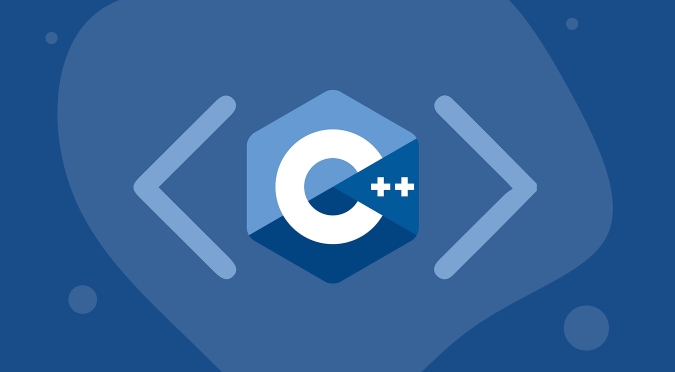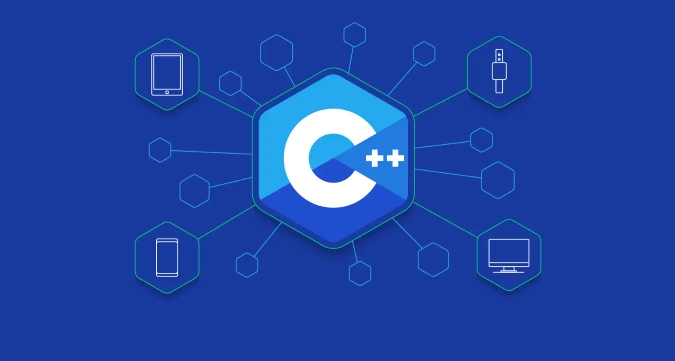What is the Standard Template Library (STL) in C ?
C STL is a set of general template classes and functions, including core components such as containers, algorithms, and iterators. Containers such as vector, list, map, and set are used to store data. Vector supports random access and is suitable for frequent reading; list insertion and deletion are efficient but access is slow; map and set are based on red and black trees, and automatic sorting is suitable for fast searches. Algorithms such as sort, find, copy, transform, and accumulate are commonly used to encapsulate them, and act on the iterator range of the container. The iterator acts as a bridge connecting containers to algorithms, supporting traversal and accessing elements. Other components include function objects, adapters, allocators, which are used to customize logic, change behavior, and memory management. STL simplifies C programming, improving efficiency and code reuse.

C's Standard Template Library (STL) is a common set of template classes and functions used to implement common data structures and algorithms. It is not an integral part of the C language itself, but it is widely integrated into the standard library and has become an important tool for modern C programming.

Container: "box" that stores data
The most core part of STL is containers, which are used to organize and store different types of data. Commonly used containers include vector , list , map , set , etc.

-
vectoris similar to dynamic arrays, supports random access, and is suitable for frequent read scenarios. -
listis a two-way linked list, with high insertion and deletion efficiency, but slow access to elements. -
mapandsetare based on red and black trees and are automatically sorted, suitable for occasions where quick searches and unique key values are needed.
For example: If you are dealing with a set of changing student scores, using vector may be more convenient than fixed-length arrays:
std::vector<int> scores = {85, 90, 78};
scores.push_back(93); // Add new scoreDifferent containers have different scenarios. When choosing, you should consider the access frequency and the cost of insertion and deletion operations.

Algorithm: Commonly used package
STL provides a rich set of algorithms (Algorithms), such as sorting, searching, copying, transformation, etc. These algorithms usually act on the iterator range of the container.
For example, sorting vectors using std::sort is very simple:
std::sort(scores.begin(), scores.end());
Common algorithms include:
-
find: Find whether an element exists -
copy: Copy the contents of one container to another -
transform: performs some kind of transformation operation on each element -
accumulate: sum or custom accumulation operations
The benefit of these algorithms is that they have been optimized and can be used with any compatible container, reducing the work of re-making wheels.
Iterator: a bridge connecting containers and algorithms
Iterators are objects used in STL to traverse container elements, a bit like pointers. It allows the algorithm to not know the internal structure of the specific container, but only needs to access the elements through an iterator.
You can think of an iterator as a "page turner" and view data page by page. for example:
for (auto it = scores.begin(); it != scores.end(); it) {
std::cout << *it << " ";
}STL supports multiple types of iterators, such as forward, reverse, constant iterators, etc. Understanding their differences can help write more efficient and secure code.
Other components: adapters, functors, allocators, etc.
In addition to the above three core parts, STL also includes some auxiliary components:
- Function Objects (Functors) : Objects that can be called like functions, often used to customize sorting or operation logic.
- Adaptors : Change the behavior of existing components, such as
stackorqueue, is adeque-based adapter. - Allocators : Responsible for memory management, and by default, it rarely needs to be implemented by itself.
Although these components are not as frequently used in daily development as containers and algorithms, they come in handy in advanced applications or performance optimization.
In general, STL provides efficient, flexible, and reusable data structures and algorithms, greatly simplifying C development work. Mastering its basic usage is a key step to becoming a qualified C programmer. Basically that's it.
The above is the detailed content of What is the Standard Template Library (STL) in C ?. For more information, please follow other related articles on the PHP Chinese website!

Hot AI Tools

Undress AI Tool
Undress images for free

Undresser.AI Undress
AI-powered app for creating realistic nude photos

AI Clothes Remover
Online AI tool for removing clothes from photos.

Clothoff.io
AI clothes remover

Video Face Swap
Swap faces in any video effortlessly with our completely free AI face swap tool!

Hot Article

Hot Tools

Notepad++7.3.1
Easy-to-use and free code editor

SublimeText3 Chinese version
Chinese version, very easy to use

Zend Studio 13.0.1
Powerful PHP integrated development environment

Dreamweaver CS6
Visual web development tools

SublimeText3 Mac version
God-level code editing software (SublimeText3)

Hot Topics
 1793
1793
 16
16
 1736
1736
 56
56
 1587
1587
 29
29
 267
267
 587
587
 How to pass a function as a parameter in C ?
Jul 12, 2025 am 01:34 AM
How to pass a function as a parameter in C ?
Jul 12, 2025 am 01:34 AM
In C, there are three main ways to pass functions as parameters: using function pointers, std::function and Lambda expressions, and template generics. 1. Function pointers are the most basic method, suitable for simple scenarios or C interface compatible, but poor readability; 2. Std::function combined with Lambda expressions is a recommended method in modern C, supporting a variety of callable objects and being type-safe; 3. Template generic methods are the most flexible, suitable for library code or general logic, but may increase the compilation time and code volume. Lambdas that capture the context must be passed through std::function or template and cannot be converted directly into function pointers.
 What is a POD (Plain Old Data) type in C ?
Jul 12, 2025 am 02:15 AM
What is a POD (Plain Old Data) type in C ?
Jul 12, 2025 am 02:15 AM
In C, the POD (PlainOldData) type refers to a type with a simple structure and compatible with C language data processing. It needs to meet two conditions: it has ordinary copy semantics, which can be copied by memcpy; it has a standard layout and the memory structure is predictable. Specific requirements include: all non-static members are public, no user-defined constructors or destructors, no virtual functions or base classes, and all non-static members themselves are PODs. For example structPoint{intx;inty;} is POD. Its uses include binary I/O, C interoperability, performance optimization, etc. You can check whether the type is POD through std::is_pod, but it is recommended to use std::is_trivia after C 11.
 What is the mutable keyword in C ?
Jul 12, 2025 am 03:03 AM
What is the mutable keyword in C ?
Jul 12, 2025 am 03:03 AM
In C, the mutable keyword is used to allow the object to be modified, even if the object is declared as const. Its core purpose is to maintain the logical constants of the object while allowing internal state changes, which are commonly found in cache, debug counters and thread synchronization primitives. When using it, mutable must be placed before the data member in the class definition, and it only applies to data members rather than global or local variables. In best practice, abuse should be avoided, concurrent synchronization should be paid attention to, and external behavior should be ensured. For example, std::shared_ptr uses mutable to manage reference counting to achieve thread safety and const correctness.
 What is memory alignment and why is it important in C ?
Jul 13, 2025 am 01:01 AM
What is memory alignment and why is it important in C ?
Jul 13, 2025 am 01:01 AM
MemoryalignmentinC referstoplacingdataatspecificmemoryaddressesthataremultiplesofavalue,typicallythesizeofthedatatype,whichimprovesperformanceandcorrectness.1.Itensuresdatatypeslikeintegersordoublesstartataddressesdivisiblebytheiralignmentrequiremen
 How to generate a UUID/GUID in C ?
Jul 13, 2025 am 02:35 AM
How to generate a UUID/GUID in C ?
Jul 13, 2025 am 02:35 AM
There are three effective ways to generate UUIDs or GUIDs in C: 1. Use the Boost library, which provides multi-version support and is simple to interface; 2. Manually generate Version4UUIDs suitable for simple needs; 3. Use platform-specific APIs (such as Windows' CoCreateGuid), without third-party dependencies. Boost is suitable for most modern projects, manual implementation is suitable for lightweight scenarios, and platform API is suitable for enterprise environments.
 Understanding move assignment operator in C
Jul 16, 2025 am 02:20 AM
Understanding move assignment operator in C
Jul 16, 2025 am 02:20 AM
ThemoveassignmentoperatorinC isaspecialmemberfunctionthatefficientlytransfersresourcesfromatemporaryobjecttoanexistingone.ItisdefinedasMyClass&operator=(MyClass&&other)noexcept;,takinganon-constrvaluereferencetoallowmodificationofthesour
 C vs Python performance
Jul 13, 2025 am 01:42 AM
C vs Python performance
Jul 13, 2025 am 01:42 AM
C is usually faster than Python, especially in compute-intensive tasks. 1.C is a compiled language that directly runs machine code, while Python executes while interpreting and executing, which brings additional overhead; 2.C determines the type during compilation and manages memory manually, which is conducive to CPU optimization, and Python dynamic typing and garbage collection increase burden; 3. It is recommended to be used for high-performance scenarios such as game engines and embedded systems. Python is suitable for data analysis and rapid development scenarios with priority efficiency; 4. Performance testing is recommended to use time tools, eliminate I/O interference, and average values multiple times to obtain accurate results.
 Pure Virtual Functions in C
Jul 15, 2025 am 01:52 AM
Pure Virtual Functions in C
Jul 15, 2025 am 01:52 AM
Pure virtual functions are the key mechanisms used in C to define abstract classes and interfaces, and their core role is to force derived classes to implement specific methods. 1. The pure virtual function is declared through virtualvoidfunc()=0; and the implementation is not provided, making the class an abstract class and cannot be instantiated; 2. It is used to simulate the interface to ensure that the subclass must rewrite the method, such as the draw() of the Shape base class in the graphics library; 3. Supports runtime polymorphism, allowing the base class pointer to call the implementation of different subclasses; 4. Although the abstract class cannot create objects, it can contain constructors, member variables and implemented ordinary functions; 5. If the derived class does not fully implement all pure virtual functions, it will also become an abstract class; 6. In special cases, the pure virtual function can provide default implementation for derivation.





